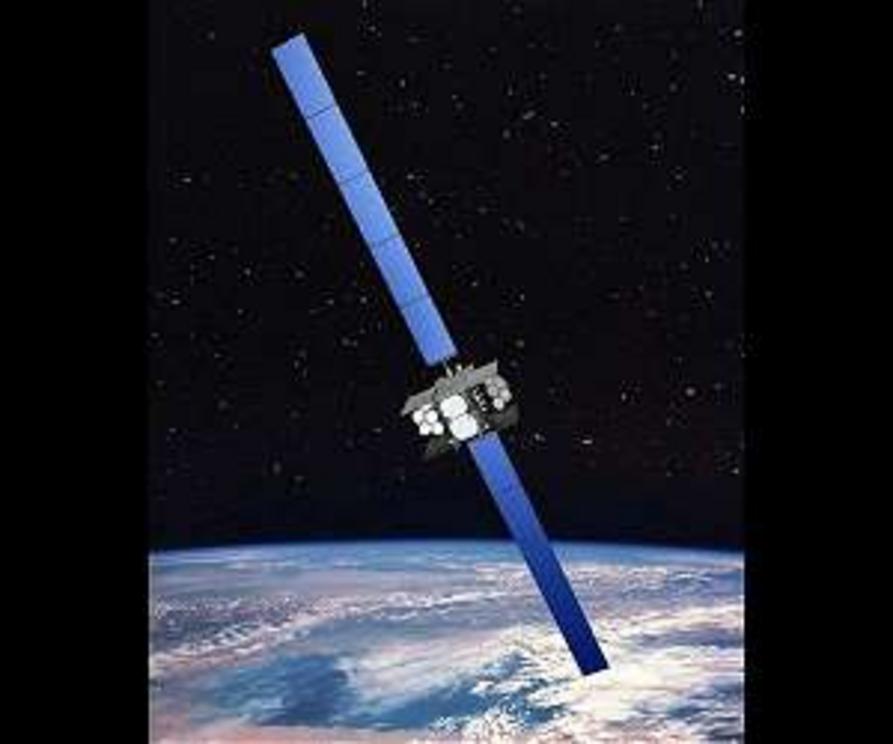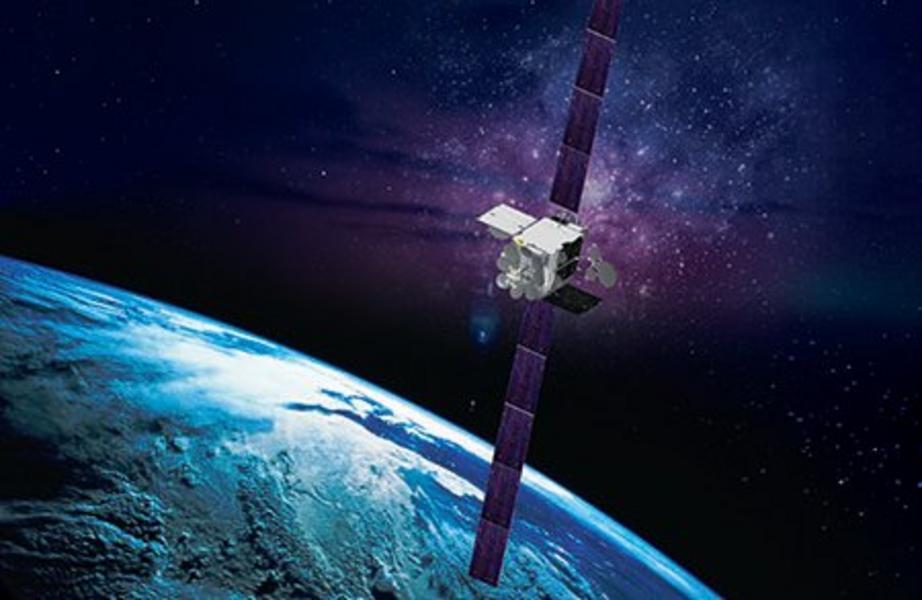9th wideband global SATCOM satellite expands military communications capabilities of US and allies
Boeing's ninth Wideband Global SATCOM (WGS) satellite is now in orbit where it will provide the United States and six allied nations with increased communications capabilities to prevent, protect against and respond to attacks.
The WGS-9 satellite was funded through an agreement between the United States and Canada, Denmark, Luxembourg, the Netherlands and New Zealand, and will also serve Australia (which funded the WGS-6 satellite). Each partner country gains access to the capabilities provided by the full WGS system, which include flexible and secure communication transmissions in the X- and Ka-band frequencies.
 An artist rendering of a Boeing-built WGS block II satellite.
An artist rendering of a Boeing-built WGS block II satellite.
"This unique international collaboration increases military interoperability and expands affordable high-data-rate communications for U.S. and allied partners around the globe," said Rico Attanasio, executive director, Boeing Department of Defense/Civil Satellite Programs. "WGS-9 is among the most capable military communication satellites on orbit today."
WGS-9 launched on a United Launch Alliance Delta IV rocket. Boeing is on contract for 10 WGS satellites, the last of which is tentatively scheduled for launch in 2018. The eighth, ninth and tenth WGS satellites include upgraded digital channelizers that nearly double the available bandwidth of earlier satellites in the series.
45th SW supports successful Delta IV WGS-9 launch
The U.S. Air Force's 45th Space Wing supported United Launch Alliance's successful launch of the WGS-9 spacecraft aboard a ULA Delta IV rocket from Space Launch Complex 37 here March 18, 2017, at 8:18 p.m. ET.
The Air Force has been breaking barriers since 1947 and the successful WGS-9 launch marks an important occasion for the Wideband constellation as it is a major milestone in a 20-year multilateral partnership.
In January 2012, the United States, Canada, Denmark, Luxembourg, the Netherlands, and New Zealand signed a multilateral Memorandum of Understanding with the United States, agreeing to fund the procurement of the ninth WGS satellite. The U.S. is responsible for funding the launch, operation and sustainment of WGS-9. International partners will receive a proportional share of the bandwidth provided by the WGS constellation based on financial contribution.
The WGS constellation is the highest-capacity military communications system in the U.S. Department of Defense arsenal. WGS supports a wide variety of missions for Combatant Commanders around the world to perform missions, from search and rescue efforts to military operations. Air Force Space Command's Space and Missile Systems Center is the Air Force's center for acquiring and developing military space systems.
The addition of WGS-9 to the constellation will increase speed, reliability, and effectiveness for the warfighter, which enables the U.S. and international partners to more efficiently coordinate on missions in the air, on land and by sea.
According to Brig. Gen. Wayne Monteith, 45th Space Wing commander and mission Launch Decision Authority, the fourth major launch operation on the Eastern Range this year, and second successful launch in just two and a half days, culminates many long hours and hard work by the entire mission team.
"Thanks to the amazing commitment, focus on the mission, and teamwork the men and women of the 45th Space Wing share with our mission partners at SMC and ULA, we successfully launched the next satellite in the WGS constellation," he said. "This mission demonstrates the Air Force's commitment to deliver secure and reliable satellite communications around the globe to U.S. forces and our allies. It also once again showcases why the 45th Space Wing is the 'World's Premiere Gateway to Space.'"
Aerojet Rocketdyne Supports ULA Launch of Wideband Global SATCOM Spacecraft for the U.S. Military
Aerojet Rocketdyne played a major role in successfully launching and placing the ninth Wideband Global SATCOM (WGS-9) spacecraft into orbit for the U.S. military. The mission was launched from Cape Canaveral Air Force Station in Florida aboard a United Launch Alliance (ULA) Delta IV rocket.
Aerojet Rocketdyne propulsion systems included the RS-68A booster engine, the RL10B-2 upper-stage engine, 14 helium pressurization tanks, and a 100 lbf bipropellant apogee-raising engine aboard the WGS-9 spacecraft.
"The WGS satellites provide critical communication capabilities for our nation's warfighters," said Aerojet Rocketdyne CEO and President Eileen Drake. "We are honored that our propulsion systems are called upon to place these critical payloads into orbit - payloads that will help protect our nation and allied forces."
Aerojet Rocketdyne's role in the launch began when a single RS-68A engine ignited to boost the Delta IV off the pad, providing 702,000 pounds of lift-off thrust. The RS-68A is the world's most powerful liquid hydrogen/liquid oxygen engine. The RS-68 family of engines has now flown 35 commercial and government missions with 100 percent mission success.
After the upper stage separated from the launch vehicle, a single RL10B-2 upper-stage engine ignited to place the payload into orbit. The RL10B-2 delivers 24,750 pounds of thrust to power the Delta IV upper stage, using cryogenic liquid hydrogen and liquid oxygen propellants.
The RL10B-2 was developed from the RL10 family of upper-stage engines, which has accumulated one of the most impressive track records of accomplishments in the history of space propulsion.
More than 475 RL10 engines have supported launches over the last 50 years, playing a vital role in placing military, government and commercial satellites into orbit, and powering scientific space probes on every interplanetary mission in our solar system. ARDE, a subsidiary of Aerojet Rocketdyne based in New Jersey, manufactures the pressure vessels on the first and second stages of the launch vehicle.
Once separated from the launch vehicle, WGS-9 will perform multiple burns on Aerojet Rocketdyne's High Performance Apogee Thruster (HiPAT) rocket engine to complete the orbit raising from Geosynchronous Transfer Orbit to its final geosynchronous orbital position. The HiPAT rocket engine has a 100 percent mission success track record spanning over 115 missions, including all WGS spacecraft.

